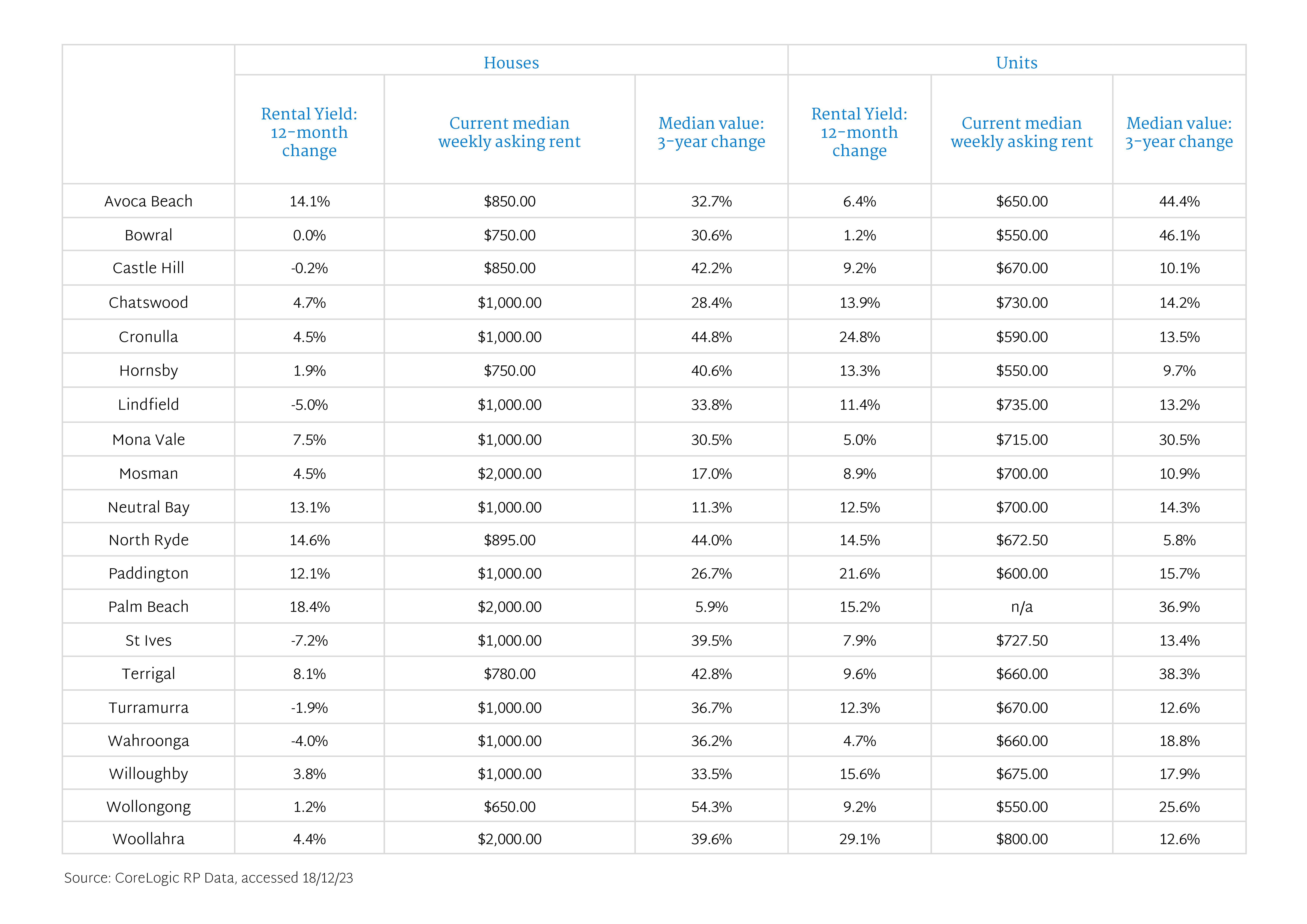In 2023, property markets across NSW faced a remarkable period of transition and challenge. Rising interest rates, escalated cost-of-living pressures, and a tightening rental market created a unique environment for investors.
I’d like to walk you through the key factors that have shaped the NSW property landscape over the past 12 months, from the impact of rising interest rates to the dynamics of the rental market and government interventions. Plus, I’ll share some insights into the complexities and opportunities shaping the current NSW property market as we move forward into 2024.
Interest rates and cost-of-living pressures
Throughout the year, NSW property investors grappled with a challenging landscape marked by escalating cost-of-living pressures.
Ongoing interest-rate rises particularly impacted investors with variable-rate mortgages and those looking to purchase new properties as loan repayments were pushed ever higher and borrowing capacity decreased.
In addition, the overall rise in living expenses added another layer of complexity to the financial management of investment properties, requiring investors to be more strategic in their property selections and financial planning, with a greater emphasis on long-term sustainability and the potential for capital growth.
The tightening rental market
A surge in migration and shortfall in housing supply saw the rental market undergo significant tightening throughout 2023. Population statistics for the 2022-23 financial year show that Australia saw the number of international students increase by 100% and working holiday makers by 240%, with NSW recording a net gain of 174,200 people.1
This influx put strain on an already stretched sector, resulting in persistently low vacancy rates across most regions, particularly in areas like the Sutherland Shire, Northern Beaches, and Central Coast, where the intensity of a stressed rental market was keenly felt.
.jpg?h=4961&iar=0&w=4961&rev=3402d4731d4042d7828ec0160537a8b5&hash=C251278EAF7D9CE3DA9776DDFF54A707)
With only minimal seasonal variations observed and no significant easing in rental market pressures, it’s a scenario that paints a picture of a widespread rental crisis, where the demand for rental properties consistently exceeds the available supply.
These figures clearly highlight the ongoing need for strategic investment and policy approaches to address the rental shortage and related affordability issues.
Rental yields, asking prices and capital growth
In terms of rental yields and capital growth, we saw a nuanced landscape with varied results across our different regions.
The strongest performing areas saw impressive growth in rental yields for both houses and apartments, which will have mitigated the effects of rising interest rates to some extent. However, there were some notable variations, such as the rental yield figures for houses in Lindfield and St Ives, which suggest a shift in demand towards apartment living.
Longer-term data shows strong capital growth across the state, reaffirming the underlying strength of the NSW property investment market.
Overall, we saw a resilient and adaptable market that, while challenged by the rental crisis, continued to offer robust investment opportunities and potential for continued growth and profitability for discerning investors.

Government incentives
In 2023, the Australian government launched several initiatives to address the escalating housing sector pressures. These included advancing social housing programs, introducing tax incentives for housing investments, and unveiling the ambitious national housing accord, which aims to build 1 million new homes over five years from 2024. These measures seek to expand affordable housing and boost the overall housing supply, addressing the affordability crisis.
In December, the government also announced new investment fees for foreign investors. These include increased application fees for purchasing established homes and higher vacancy fees for unoccupied properties. Targeting homes bought after May 2017, these measures are designed to stimulate investment in new housing developments and enhance rental property availability, contributing to the mitigation of the rental crisis. The policy shift is expected to make itself felt on the property market in 2024.
Looking ahead to 2024
The rental market is poised to diverge from the rapid growth pattern we saw in 2023, in a shift likely to be driven by a stabilisation in net overseas migration, which may ease the intense demand pressures. At the same time, the pressures of rental affordability could lead tenants to seek more cost-effective living options, possibly reigniting interest in shared housing or more affordable suburbs.
The Big 4 banks agree that we are likely to see interest rates start to decline towards the end of 2024. Their forecasts vary, but there is an overall expectation that interest rates peak early in the year, then hold for some months. This means that for many property investors and homeowners, 2024 will be a time of endurance, with potential relief coming towards the end of the year.
A final word: looking ahead with cautious optimism
As we turn the page to 2024, the NSW property investment market appears to be at a crossroads. While the challenges of the past year have undoubtedly left their mark, the resilience and adaptability of the market remain evident. Government incentives, changing migration patterns, and the possibility of stabilising interest rates present a blend of uncertainties and opportunities.
For investors, the coming year will require a balanced approach, combining vigilance with strategic decision-making. Amidst these changing tides, one thing remains certain: the NSW property market continues to be a dynamic and significant player in the broader Australian economic landscape.
[1] https://www.abs.gov.au/statistics/people/population/overseas-migration/2022-23-financial-year#state-and-territory
Other buying, selling and investing articles and resources
Guide to property investment success in NSW
Selling a house or apartment in NSW eBook
Buying a house or apartment in NSW eBook
Property investment in NSW FAQ’s
What is a property cycle and what drives a change?
Disclaimer
DiJones Real Estate, together with their directors, officers, employees and agents have used their best endeavours to ensure the information passed on in this document is accurate. However, you must make your own enquiries in relation to the information contained in this document and seek advice from your financial advisor, broker or accountant to ascertain its application to your circumstances.
This information is provided subject to our Terms and Conditions.
